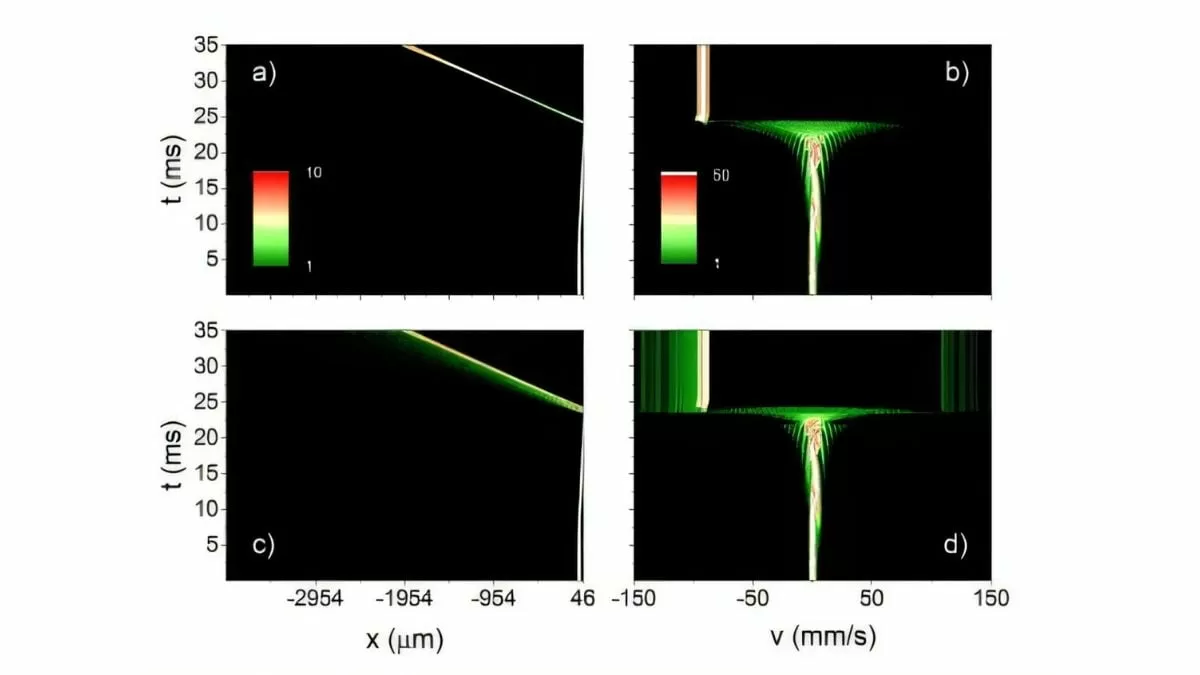Scientists have made a groundbreaking discovery in the field of particle physics, recreating the phenomenon of Fermi acceleration in a laboratory setting. This achievement, made possible by the collaboration of teams from the University of Birmingham and the University of Chicago, has opened up new possibilities for high-energy astrophysics studies and advancements in quantum technology.
Fermi acceleration, named after Italian physicist Enrico Fermi, is a process by which particles gain energy as they travel through space. This phenomenon is responsible for the high-energy cosmic rays that constantly bombard our planet from outer space. Until now, scientists have only been able to observe this process in the vast expanse of the universe, but with the development of a mini Fermi accelerator, they can now recreate it in a controlled environment.
The key to this breakthrough lies in the use of ultracold atoms and movable optical barriers. By cooling the atoms to extremely low temperatures, scientists were able to manipulate their movements using these barriers, simulating the conditions of cosmic rays traveling through space. This allowed them to observe and study the process of Fermi acceleration up close, something that was previously impossible.
The mini Fermi accelerator is a major step forward in the field of particle physics. It not only confirms the validity of Fermi’s theory, but also provides a new tool for studying high-energy astrophysics. By being able to recreate this process in a lab, scientists can now conduct experiments and gather data that was previously unattainable. This will greatly enhance our understanding of the universe and its most energetic particles.
Moreover, this achievement has significant implications for quantum technology. The use of ultracold atoms and movable optical barriers in the mini Fermi accelerator showcases the potential of these technologies in advancing our understanding of the universe. It also opens up possibilities for developing new quantum technologies that can be used in various fields, such as computing and communication.
The teams from Birmingham and Chicago have worked tirelessly to make this breakthrough a reality. Their collaboration and dedication have paid off, and their achievement has been met with great excitement and enthusiasm from the scientific community. This is a testament to the power of teamwork and the importance of international collaborations in pushing the boundaries of science.
The mini Fermi accelerator is just the beginning. With this new tool in hand, scientists can now delve deeper into the mysteries of the universe and explore the most extreme conditions that exist in space. This could lead to groundbreaking discoveries and advancements in our understanding of the cosmos.
In addition, this development has the potential to inspire future generations of scientists and researchers. The mini Fermi accelerator showcases the power of human curiosity and determination in unraveling the secrets of the universe. It serves as a reminder that there is still so much to be discovered and that the possibilities are endless.
In conclusion, the successful recreation of Fermi acceleration in a lab using ultracold atoms and movable optical barriers is a major achievement in the field of particle physics. It marks a significant advancement in our understanding of the universe and opens up new avenues for high-energy astrophysics studies and innovations in quantum technology. This breakthrough is a testament to the ingenuity and perseverance of scientists and serves as a source of inspiration for future discoveries. The mini Fermi accelerator has truly opened doors to a new era of scientific exploration and discovery.

